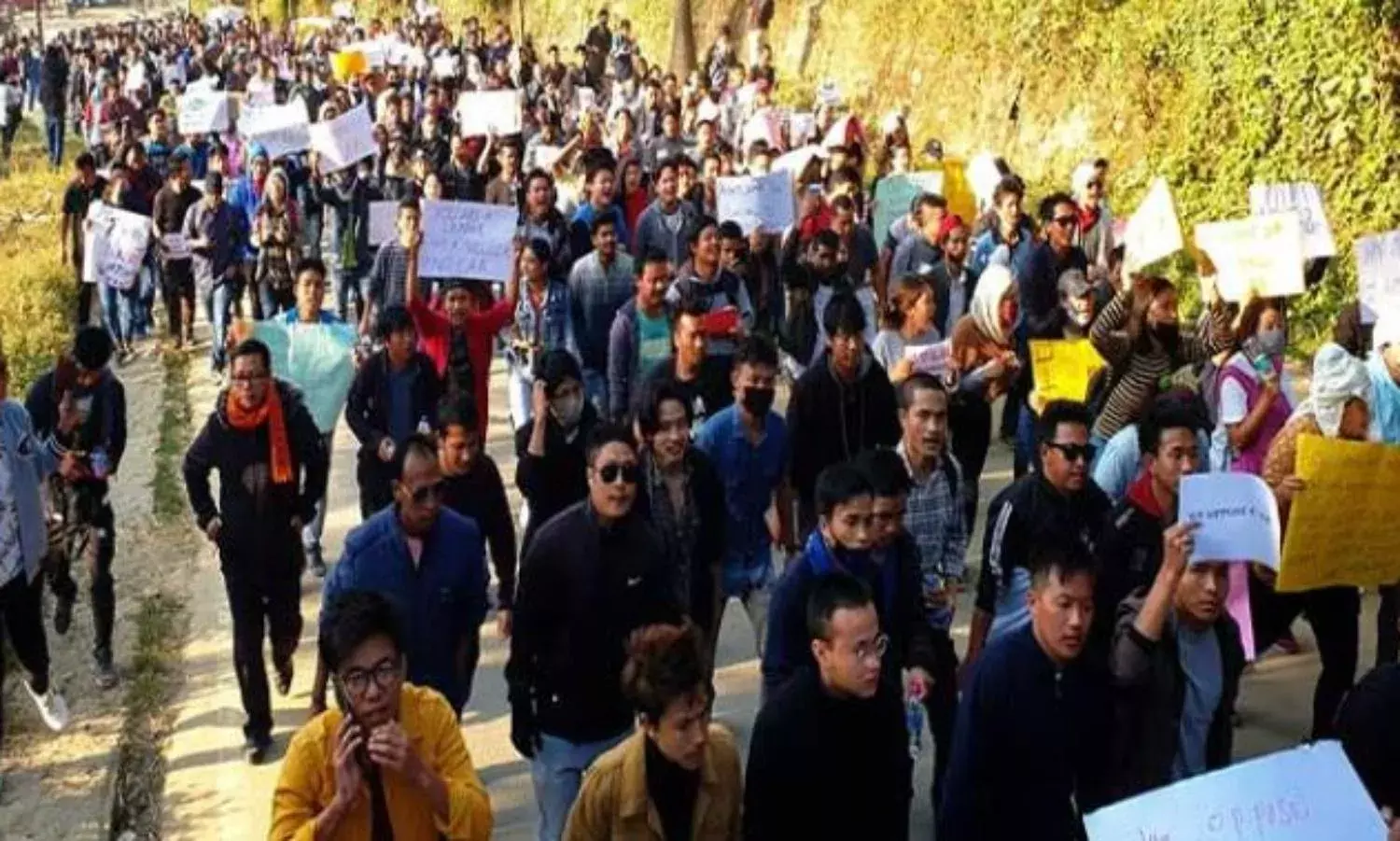Deaths Do Not Stop CAB Protests - Assam, Arunachal, Meghalaya, Tripura Reverberate to 'Azadi'
2 dead in Assam;

ITANAGAR: Let’s be clear: The protests in the Northeast against the central government’s insistence on introducing and passing the Citizenship Amendment Bill (CAB) is not fuelled by any great humanitarian sympathy that Muslims have been left out from its ambit.
While protests in Delhi may be motivated by the fact that it is discriminatory and goes against the basic principle of the Constitution of India, in Assam, where the protests have led to at least two deaths, and across the region, there is genuine fear amongst indigenous communities that they will end up becoming minorities in their homes.
On Thursday, news came in that two people had been fatally shot by security forces in Guwahati, Assam. While a curfew has been imposed, people are still coming out in scores to stand in solidarity with those who died.
In Arunachal Pradesh, in the capital Itanagar, thousands of students walked for more than 30-km on hilly terrain from the Rajiv Gandhi University to Raj Bhavan to protest the CAB and call for its immediate and complete revocation.
They were eventually joined in by hundreds of citizens who found walking on the streets an easier task due to the fuel shortage that has been caused by the situation in Assam where protests continue to be held and more have been planned all across the state.
Chants of ‘azadi’ were also made during the protest today.
In Meghalaya’s capital, Shillong, too, thousands turned up in opposition against the Bill.
Mobile data and SMS services have been shut down by the state governments of Assam, Meghalaya, and Tripura.
So volatile is the situation, and the anger visible, that Prime Minister Narendra Modi’s visit to Manipur on December 17 has been postponed and Home Minister Amit Shah’s visit to Arunachal Pradesh and Meghalaya has been postponed too.
But why is there anger?
As per the Constitution, tribal-majority areas of Assam, Meghalaya, Mizoram, and Tripura as included in the Sixth Schedule and areas covered under the Inner Line Permit (ILP) regime, notified under the Bengal Eastern Frontier Regulation, 1873, are protected for the interest of indigenous tribal communities.
The ILP regime is applicable in Arunachal Pradesh, Nagaland, Mizoram, and Manipur which was recently brought under its ambit when the CAB was tabled.
The Northeast, a debatable term itself, is home to hundreds of communities, tribal and non-tribal, each with their own history, culture, and language. While some communities number in lakhs, most tribal communities have just a few thousand people.
Compare this: Assam, with an area of 78,438 square km has a population of over three crore (as per the 2011 Census). In contrast, Delhi with just 1,484 square km of area alone has over 1.6 crore people.
Add to it the culturally heterogeneous population, and we have a situation where every community is fighting for its own share of the proverbial pie.
To the mix is the fact that India shares a porous boundary with Bangladesh, leading to Assam witnessing illegal immigration for decades which started the Assam Agitation and birthed the United Liberation Front of Asom (ULFA) in 1979.
While Assam is most vulnerable to bear the brunt of the CAB’s impact, there are concerns about the effect of demographic changes arising from migration from Bangladesh will also spill over to neighbouring states of Arunachal Pradesh and Nagaland, where non-indigenous communities already form a major vote bank.
In Arunachal Pradesh and Mizoram, another additional issue is the status of the existing Chakma and Hajong population (who are primarily Hindu and Buddhist, respectively), and that the CAB will encourage migration into some areas where the local indigenous tribals have already become minorities.
The president of the All Arunachal Pradesh Students' Union (AAPSU), Hawa Bagang, today demanded a ‘clear-cut answer’ from Delhi regarding the citizenship status of the two communities.
Such concerns have crept up despite of ‘protective measures’ like the ILP and the Sixth Schedule.
While these provisions mean that citizens who are not indigenous to those areas and states need to acquire a special permit and cannot own immovable property (land), it has done little to ‘protect’ the local population, many of which do not even number in lakhs.
Acquiring ILP is a formality that is issued easily by the authorities and not being able to own land only means that trade licenses for businesses are acquired in the name of tribal person while the businesses control the flow of cash in times of election, thus commanding considerable political clout.
Although the Centre has tried to assuage concerns of the people of the region, the Constitutional safeguards that are in place need stronger amendments and stricter implementation to ensure that the tribal communities that have been constantly battling demographic changes and cultural and linguistic imposition are given a fighting chance to keep their cultures alive.

